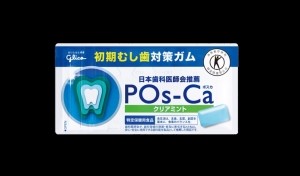You like potayto, EFSA likes potahto starch-derived calcium

EFSA said there was “no safety concern” for the use of calcium phosphoryl oligosaccharides (POs-Ca) as a source of calcium added for nutritional purposes to food, supplements and foods for special medical purposes at the planned use.
Research in rats showed an increase in plasma calcium concentrations after it was administered directly into the stomach. This demonstrated that the calcium was bioavailable, EFSA's Panel on Food Additives and Nutrient Sources added to Food (ANS) wrote in its opinion.
Chewing the fat
Glico intends to use POs-Ca – calcium salt of phosphoryl oligosaccharides (POs) – in chewing gum, hard confectionery, sugar-free soft candy and apple juice.
Glico says the ingredient containing 5% calcium is soluble in saliva and it is already used in chewing gum in Asia.
A 2011 study using POs-Ca gum found evidence of "significant remineralisation of enamel subsurface lesions".
Major contributor
The EFSA panel said POs-Ca would be a "major contributor" to the daily intake of calcium.
The EU has a tolerable upper intake level (UL) of 2,500 mg of calcium per day from all sources for adults and pregnant and lactating women.
With this figure in mind, the ANS panel estimated the mean total intake of calcium from all the proposed uses of POs-Ca and the normal diet would make up a daily intake of calcium ranging from 384 mg per day in infants, up to 1,561 mg per day in teenagers.
For adults and the elderly the maximum estimated mean total intakes were 1,347 mg per day and 1,181 mg per day, respectively, therefore below the UL.
For high-level exposure for infants and teenagers this stood more or less at this upper tolerable limit.
"The estimated intake of calcium from all the proposed uses of POs-Ca, in addition to the dietary intake, would therefore correspond to 33–54% and 31–47% of the UL for adults and the elderly at the mean intake," the experts wrote.
"For high-level intake, the estimated intake of calcium from all the proposed uses of POs-Ca in addition to the dietary intake would correspond to 52–97% and 50–81% of the UL for adults and the elderly, respectively."
EFSA said it did not have enough toxicity data to derive an acceptable daily intake (ADI), but the available studies did not suggest the ingredient was toxic.












